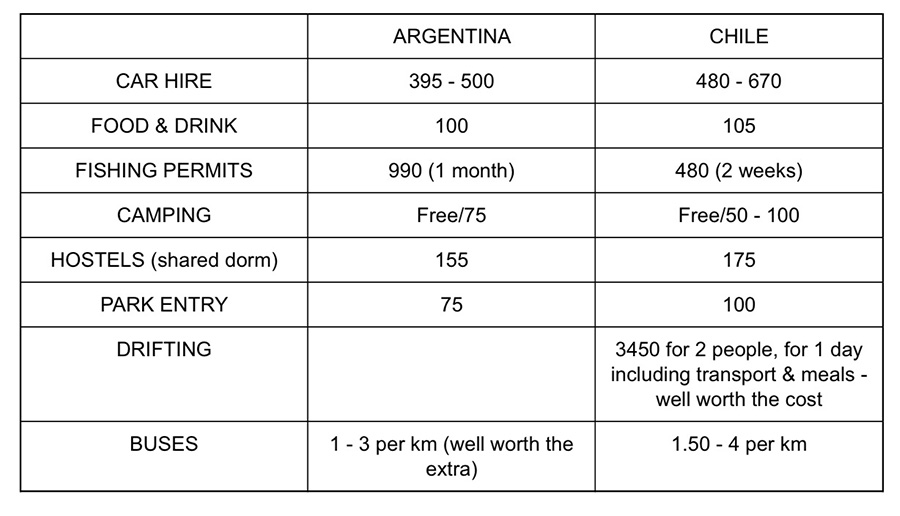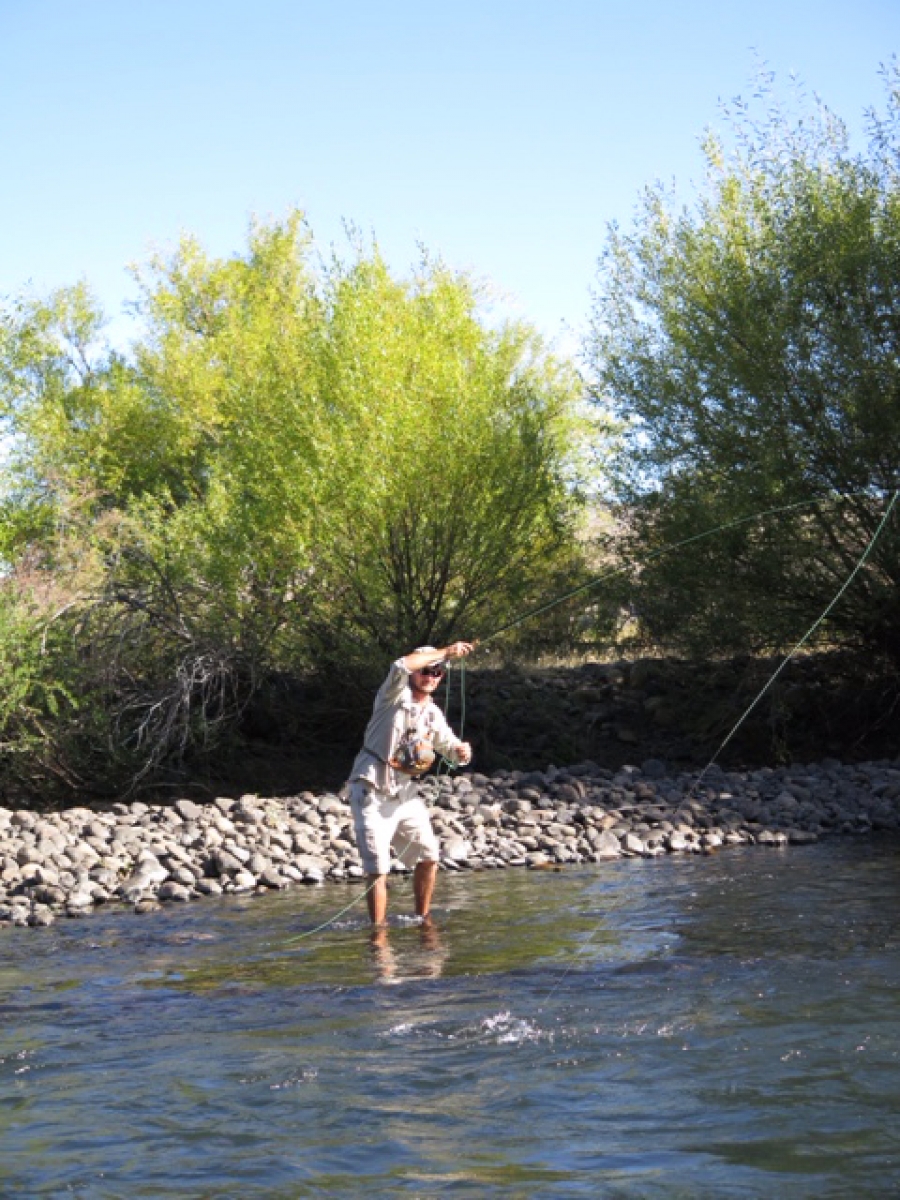- Text and images from Paul and Marion Frost. Says Paul:
My wife Marion and I flew into San Carlos de Bariloche in the Lake District of Argentina from São Paulo, Brazil. SAA's flight from Jo'burg to São Paulo is the only direct flight from Africa into South America. Our arrival in early March allowed us to catch the shoulder of peak tourist time in Patagonia, but still enjoy slightly warmer weather. This was possibly a little late in the fishing season (best time is between October and February), but it meant the rivers didn't get the same foot traffic, there were fewer drifting trips and the fish were still biting.
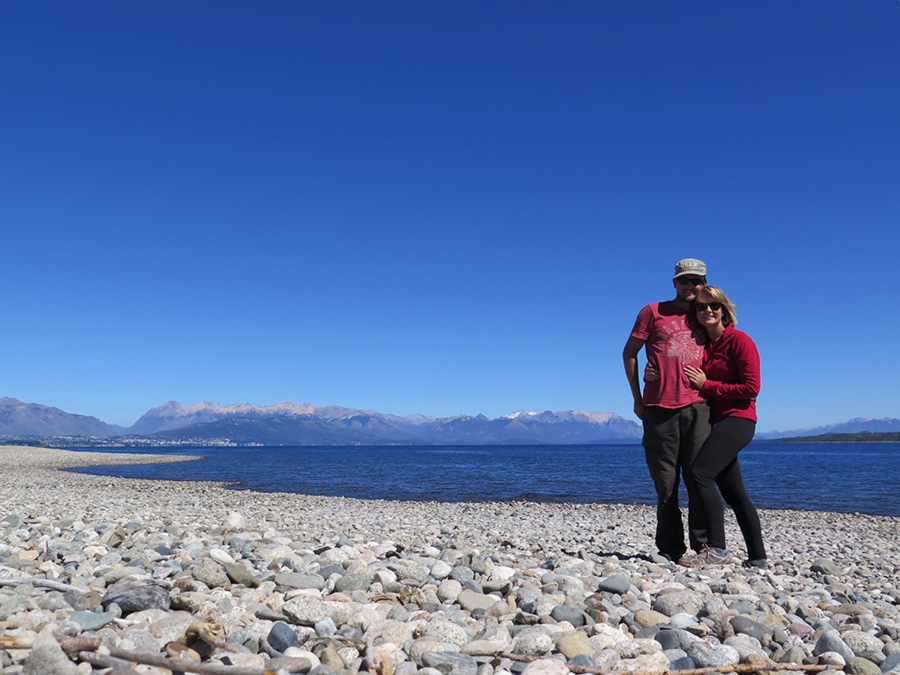
Paul and Marion with Bariloche in the background on the banks of Lago Nahuel Huapi.
Click in images to enlarge
Our modus operandi followed the same pattern in all four areas that we fished. We used buses to travel major distances, but occasionally opted for a flight. The bus systems in both Chile and Argentina are fantastic – punctual, safe and for the most part, comfortable. We would travel overnight to save on accommodation costs and maximize time on the rivers. Once in our town of choice we would stroll the streets looking for the cheapest (invariably tiniest) rental car available which would get us from river bank to river bank for the following week (the daily rate went down the longer your rental).
Equipment hire seemed an expensive option when we looked into it from the luxury of our couch so we took our own tent and camping accessories as well as fishing gear from home. This included three rods (9, 5 and 3 wt), neoprene waders, tippet and pre-tied flies. Google assisted in refining my fly selection: mostly western-style large dries (Yeager's Tantrum, Chubby Chernobyl, and a range of Caddis Patterns) and heavily weighted nymphs (Copper John, Stonefly Nymphs, GRHE etc). www.deneki.com/2011/03/idylwilde-flies-for-chile
Argentinians consider within 10m of the highwater level public property – if you can get there without trespassing, you can fish it. Loosely interpreted, one can camp along the riverbanks as well. When we were in desperate need of a shower we would pay for a campsite either in a small town or nature reserve. We were only advised once that we should be cautious camping on the side of the road/river by locals, but we never felt unsafe or threatened. Our reconnaissance missions took us off the main roads, and our little hatchback rentals took a hammering on the dirt. All in the name of finding the perfect beat.
We planned our route loosely in South Africa with advice from Phil Hills who had done a more extensive fishing adventure. Once in Argentina we found a most useful website for do-it-yourself fishing throughout Patagonia: www.firstcastflyfishing.blogspot.com . I would recommend getting in contact with Mark Foley for assistance in planning your trip prior to leaving, something I would have done in retrospect.
The Lake District, Argentina:
We followed the Ruta 40 from Bariloche to Junin de Los Andes, Parque Nacional Lanin, San Martin de Los Andes and back. A route commonly known as the 'Siete Lagos' or 'Seven Lakes'. This included the Limay, Malleo (pronounced Masheo) Chimehuim, and Alumine rivers - all fishable walk-and-wade style from the bank.
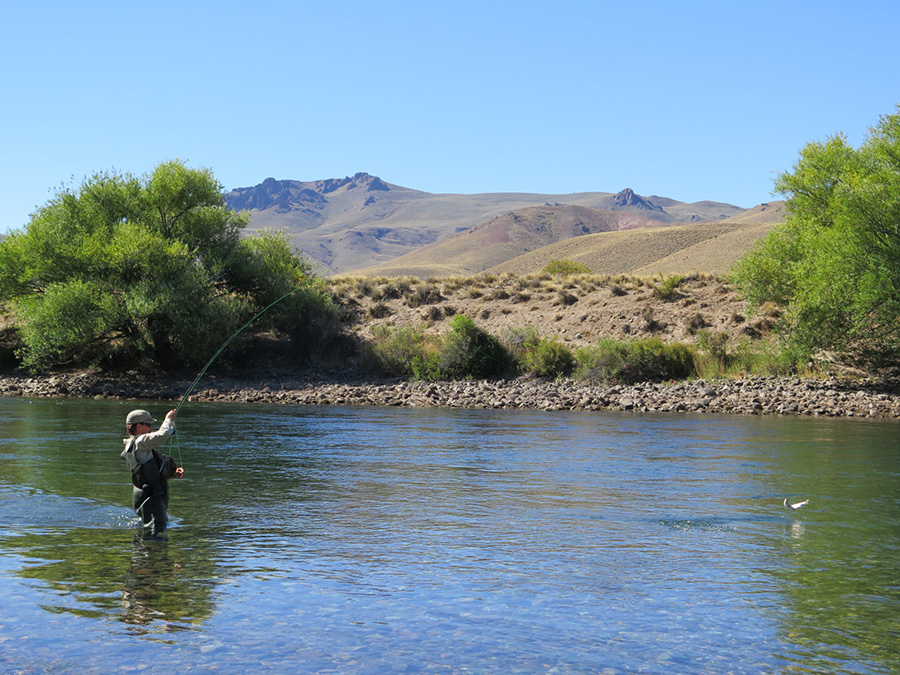
World renowned Rio Limay. Large river draining Nahuel Huapi lake, excellent water clarity with many sight fishing opportunities
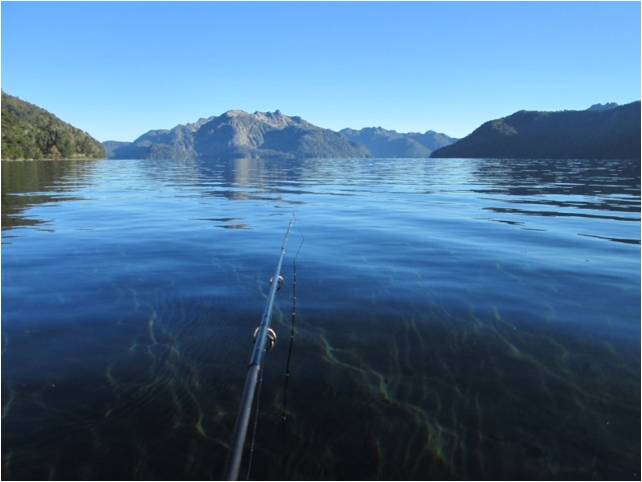
Lago Trommen at the base of Volcán Lanin. Deep, cold and lined with mineral-rich volcanic sand.
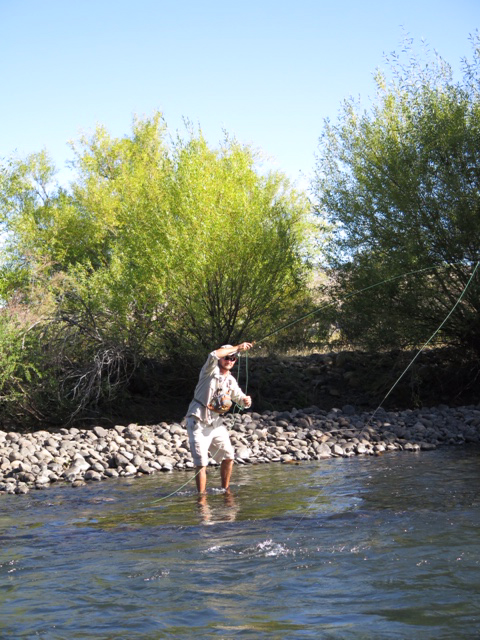
Rio Malleo – smaller river with excellent stock of larger rainbows.
Parque Nacional de Los Alerces near Esquel, Argentina:
Glacial-melt turquoise rivers crisscrossed the national park providing ample opportunity to sight fish some well sized brown's. The Rivadavia, Arrayanes and Menendez are notoriously difficult rivers to fish and proved no different over our 4 days in the Park.
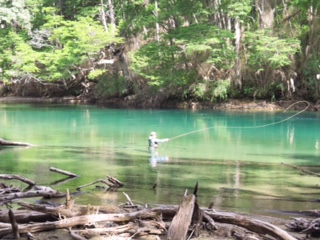
Jade Rio Arrayanes. Not a single bite, but the trout were clearly visible.
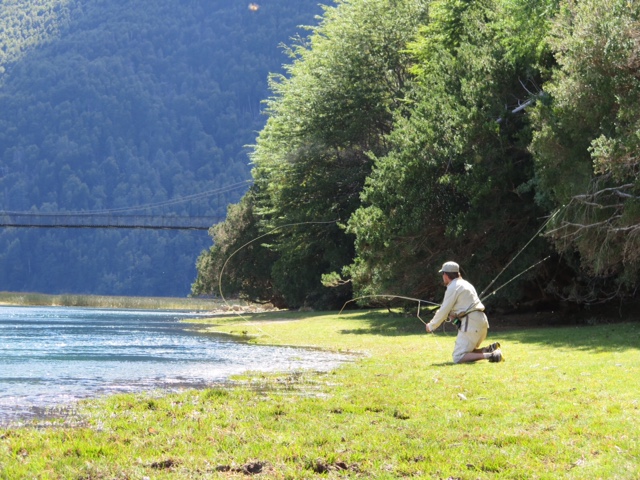
Further up the Arrayanes, sight fishing to a large cruising brown.
We ventured further South in Argentina to El Chalten followed by El Calafate and then crossed the border into Chile at Puerto Natales. We did not cross the Magellan Strait to Tierra Del Fuego - we needed to give ourselves a reason to go back again one day. From there we caught a cargo ferry through the fjords of Chile to Puerto Montt, which is just West of Bariloche.
Lake District, Chile:
After the glory of the Lake District in Argentina our expectations of the Chilean equivalent were not met. Our weather turned a bit sour with the cold wet wind bringing weather in from the Pacific and we found access to the rivers quite a bit trickier. We did, however, get our first sighting of the salmon running in the Rio Petrohue.
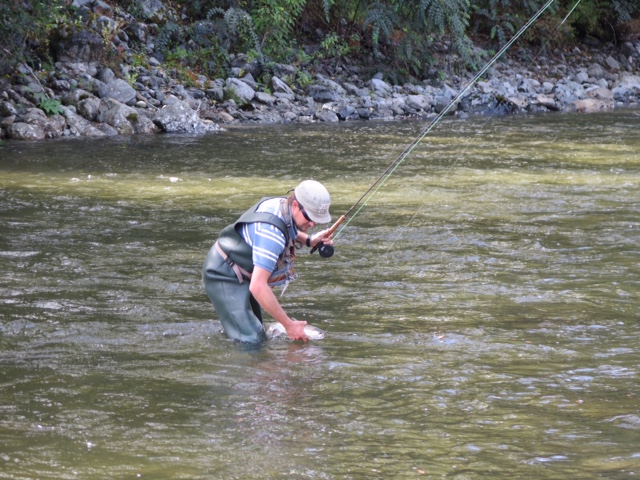
Little lunch time excursion while our tent dried out on the side of the road.

Camping on the banks of Rio Petrohue at the outlet of Lago Todos Los Santos looking onto Volcán Osorno
Balmaceda & Coyhaique, Chile:
The mighty Aysen, Simpson, Correntoso and Ñirehuao provided fishing opportunities that I have never had before: drifting down the Simpson casting a 'Scalpzilla' with a 9 wt the whole day and hooking a 30 kg salmon on a 5 wt. in the Ñirehuao - definitely experiences I won't be forgetting any time soon.
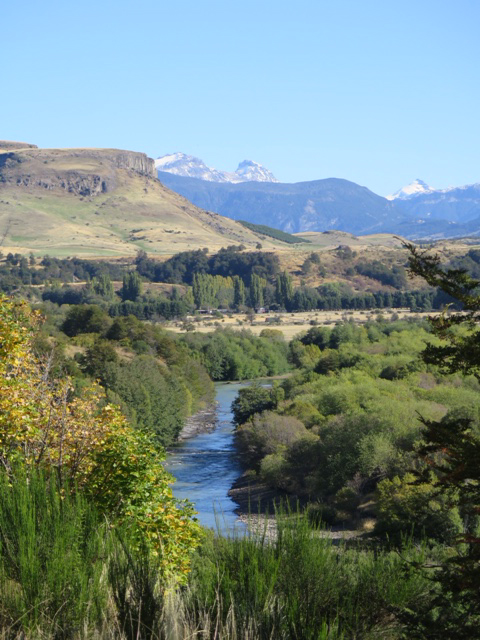
Narrower section of the milky Rio Simpson. Had better fishing the following day where the river was wider, clearer and faster flowing.
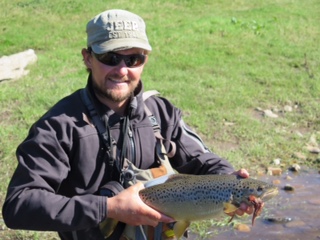
A day spent drifting down the Rio Simpson, throwing huge streamers at the bank for Browns waiting in ambush.
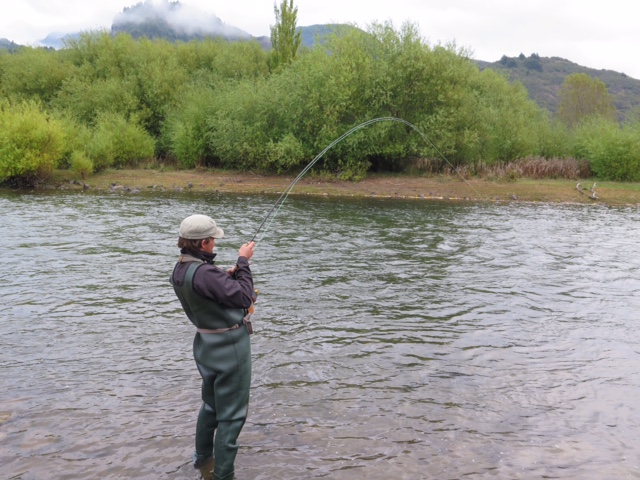
Unintentional hooking of a Chinook Salmon while targeting Browns feeding on Salmon roe.
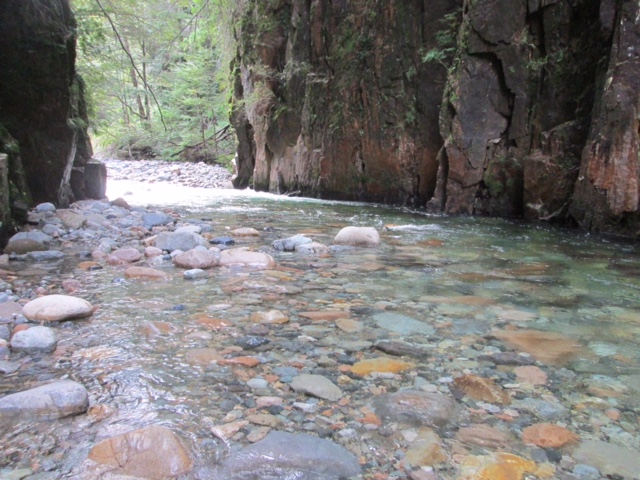
Rio Correntoso: a short tributary to the Rio Simpson. I must have landed 20+ fish in an afternoon
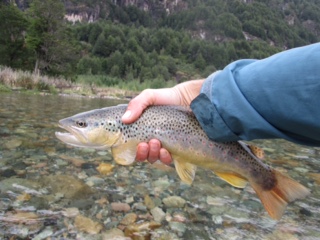
Beautiful wild brown on the Rio Correntoso.
I must mention that Marion can speak Spanish, which did make a big difference to our travelling. It gave us the confidence to get off the standard routes and explore smaller towns and unknown areas. I think that it is possible without speaking the language, but our trip was made a whole lot easier having a willing interpreter! I would recommend anyone wanting to do a similar DIY trip to learn at least a little Spanish before heading over.
Breakdown of costs per person in Rands: (2015, when exchange rate was R11,5 to the USD.)
Return flights to São Paulo R11 000
One way São Paulo to San Carlos de Bariloche R5 800
